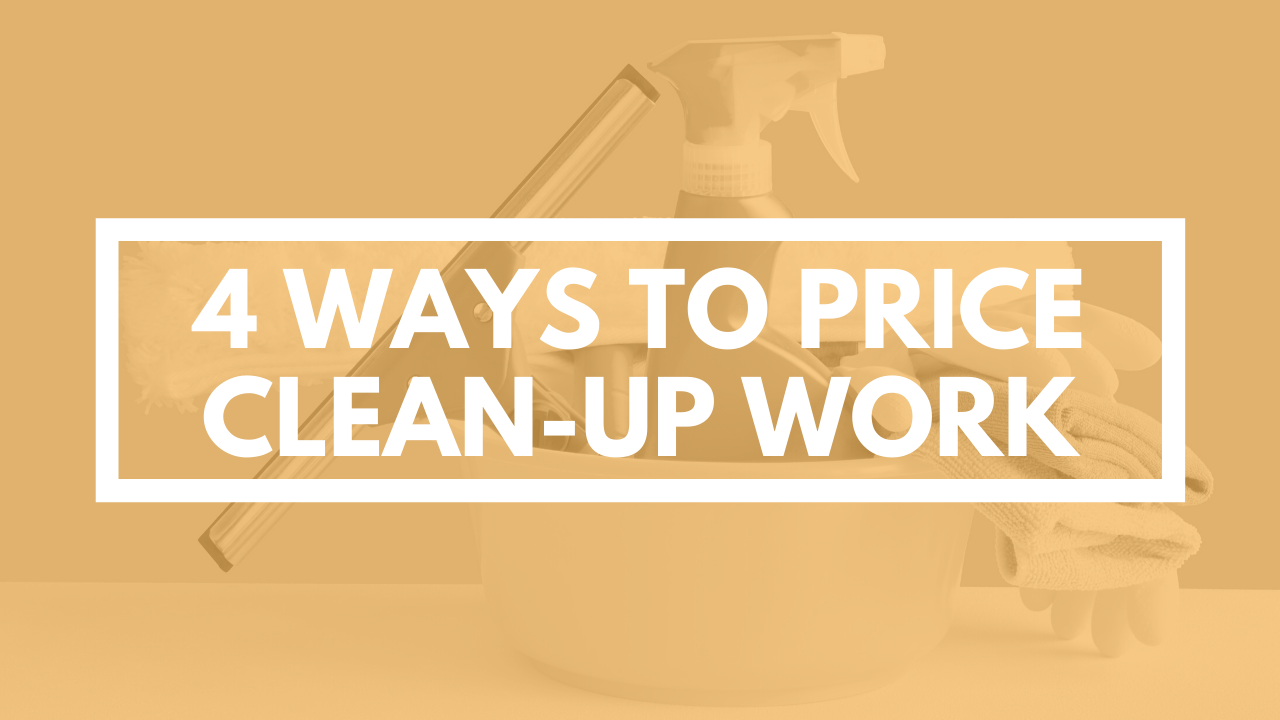
4 Ways to Price Clean-Up Work
Nov 09, 2020Clean-up work is one of those services that can feel quite tricky to price.
When a client comes to you with their books and records in a complete mess and they ask you to fix them and give a price – the difficulty is the huge amount of uncertainty.
You have no idea how much work is going to be involved. You can try asking the client to get a better idea, but sometimes they aren’t any more clued up on their books!
You might ask when they last reconciled their bank account and they tell you it was a few weeks ago, but in reality, it hasn’t been reconciled properly for 6 years.
The clients don’t know the answers and you won’t know the true scope of the work until you actually start.
It’s challenging – so how do you price that?
By the way, you can watch the video here if you prefer...
Option 1 – Charge an Hourly Rate
This is what most accountants and bookkeepers do, but it’s the worst possible way of pricing.
Customers hate hourly rates because of the surprise bill. When you quote an hourly rate to your client it will always seem more expensive. And often we tend to write time off because we think it’s too expensive!
It’s a terrible way to price, but nevertheless, it is an option.
If you decide to use an hourly rate, make sure that rate is high. It should absolutely be higher than your rate for bookkeeping work because it is a much more skilled job. With clean-up work, you are finding and fixing problems and that is hugely valuable to the client, therefore your price should be high.
Option 2 – Use Your Bookkeeping Pricing System
What many accountants and bookkeepers tend to do, is use their bookkeeping pricing system as the basis for their clean-up prices.
For example, if you have a client that you might charge $200 a month for bookkeeping work and they are 3 months behind on their bookkeeping, you might charge them for 3 months’ worth of bookkeeping work – so $600 for the entire clean-up project.
I don’t recommend this approach, but if you do decide to go with this pricing system you should again build in an increase to your prices to reflect the fact that clean-up work is a more highly valued service, and there is a higher degree of expertise required.
Option 3 – Give the Client Choices
A much better approach is to build in different levels of value and give the client some choices so they can get a fixed price upfront and choose the package best suited for them.
When you give someone a choice of 3, statistically the majority will pick the middle option because it feels the safest.
Your entry-level package may just contain the bare essentials of your service, with your old price. In your middle package – your ‘silver’ if you like – you can then add some more value and charge a higher price. The client still has the choice.
If they do choose the middle, they are choosing something they see more value in, and you are getting a higher price.
Option 4 – Involve the Client in the Pricing Process
Ultimately, the best way to price is to move to value pricing.
The difficulty with value pricing is working out how much value the client sees in your clean-up service. How much do they value having their problems solved?
The way you can find that out is to involve the client in the pricing conversation.
Ask lots of questions to uncover what pain they are currently going through.
You may discover they have the tax authorities hounding them because they haven’t filed their tax reports. This means the client has a great sense of urgency in getting their clean-up work done and they will see much more value in getting that problem solved quickly.
You can then offer them your fast-track service at a much higher price.
You create your price based on the client’s preferences, choices and what they see value in.
If the price ends up being too high, you can go back through your system and explain to the client:
“The reason it’s this price is because you chose the fast-track option. If you prefer, I can show you what the price might be if we do it at the regular speed.”
Then the client can choose based on their perception of value.
If you found this valuable and would like to learn more about value pricing, I run a free live online training session every month with a topic chosen by you. Attend live and you can ask me any questions you have. Click here to register and I will send you an invitation to the next session.
Wishing you every success on your pricing journey
Mark Wickersham
Chartered Accountant, Public Speaker and Author of Amazon No.1 Best Seller “Effective Pricing for Accountants”

